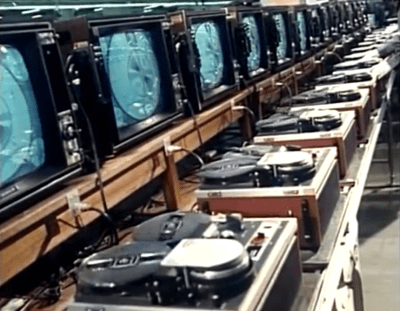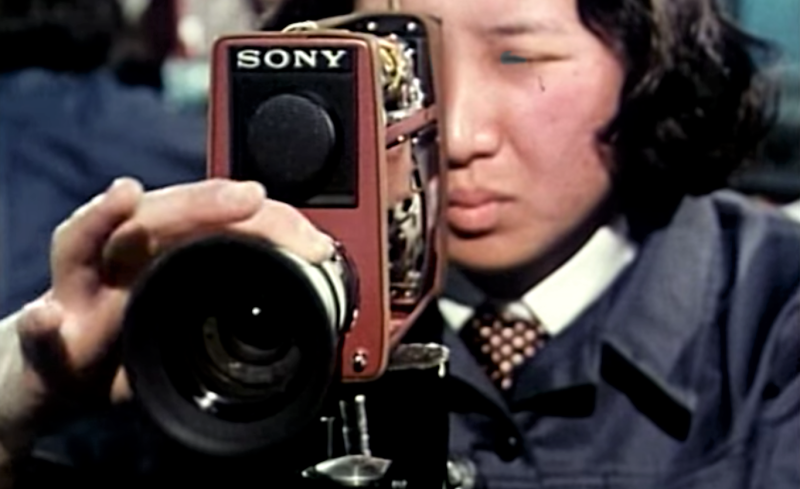The 1970s, it was a time when cameras needed film, phones had cords, and televisions masqueraded as furniture. A time where hi-fi systems were judged by the volume knob feel, and thanks to YouTube user [nefesh22] we have a behind-the-scenes glimpse of what the era was like from the Sony corporate perspective in this mini documentary of the company’s history below. The film was originally created for internal use at Sony’s US manufacturing facilities in San Diego, however, now it now can be watched by anyone with an internet connection.

Sony’s corporate ethos of allowing its engineers to drive business innovation is on full display here. For instance how in 1950 Sony introduced the first magnetic tape recorder, the G-Type, in Japan and followed that up with the first portable television, the TV8-301, a decade later. Throughout the 1970s Sony became an innovator in the video space. In fact, the Sony Trinitron brand of color TVs garnered so much notoriety in the television industry that the company was awarded an Emmy in 1973. Though the most telling feature is the documentary’s focus on the 3/4-inch U-Matic videocassette format, a precursor to VHS and Sony’s own Betamax videotapes. Highlighting the “superiority” of those VTR systems of the day really does date the film as those hulking decks failed to penetrate the market beyond early adopters and media companies.
It’s interesting to see how hands-on quality assurance testing used to be. Whether it’s glancing at NPN transistors under a microscope, dialing in the focus on a Super 8 camera, or a quick wave of the degaussing wand before a tube leaves the line, each of the QA tasks were carried out by individual employees rather than the automated methods of today. On an unrelated note, the brief overview of the Sony’s on-site “fiefdom” for its young workforce is a reminder that some ideas may be better left in the past… Google’s Mountain View campus anyone? If anything is to be gleaned from this retrotechtacular retrospective is that we could all use a little more wood-grain in our electronics these days.
Because they don’t build them like they used to, there’s also this Retrotechtacular post with video from the inside of a Sony Trinitron factory featuring some of the last CRT’s ever produced.
















I remember watching the Godfather on U-Matic at a cousin’s house back in 1973 or so , long before Beta and VHS were released to the public
Ha, I was working with U-Matic machines in an A to D conversion house in around ’98.
That’s a format that refuses to die.
Your not kidding, I was once tasked with smashing up some of those old decks with a sledge hammer back in the early 2000’s. Several blows later and the only thing broken was me!
More than a few local TV Cable companies used them for airing of local commercial spots. It was a reference standard in those markets, so-called “broadcast quality”. If it wasn’t on U-matic, it got turned away.
U-Matic replaced 16mm for local “on the spot” news coverage. It is hard to fathom but back in the day the remote news crews 16mm film. U-Matic was such a big improvement over film. They could see what they got in the field for one thing and no rushing back and processing reels of film before having to splice it together.
It’s Back Baby!
https://www.provideocoalition.com/sony-to-revive-34-u-matic-tape-format-at-nab-2018/
Yeeaaaaahhh!
Ah phooey!
For a while I worked with the local cable TV shop in the corner of Westchester Co who served where I lived, and a good corner of the county. It got glommed into the failed AT&T Broadband experiment. Then it and the service where Yonkers is, became part of the Cablevision stunt and TWCNY. (Yonkers got both.) They used the hardware described. Oh and the Yorktown Heights Schools district had then and probably still does have an internal cable TV service. And their studios used that Sony stuff.
Let’s just say high school experimented with it, it failed.
You might say I am familiar with the services.
When I was in the Navy 74-79, we had a U-matic in our onboard Tv studio/ MATV system. The primary VCR’s were IVC 1″ real to real machines. but the U-matic was simpler to use and less prone to mechanical problems. I understand that many in commercial Tv stations survived the transition from Beta to VHS by the general public. Apparently they were still well thought of even well into the VHS period..
I have the lens from the video camera in the first photo (there is a side view in the video). I didn’t know it was so old. I bought it for €5 in a jumble sale and it works well . It is not up to HD standards of course but the definition is much better than the videcon in the camera would have produced.
Now I want to own a SONY “Trinitiron” television. They couldn’t get the narrator to pronounce it like it’s spelled. Tri-ni-tron, not Tri-ni-tir-on.
Is that WEGA in the red/orange circle at 12:42? That’s what SONY called their truly flat CRTs.
That’s how you could tell that the narrator is a native Japanese speaker. Japanese has no double-consonant blends; such combinations tend to be rendered into two syllables in Japanese.
Trinitrons were fantastic, but oh, how I dreaded when a customer brought one in for repairs. They were built like tanks and weighed about as much. After wrestling it out of the car and onto the cart we had a very steep ramp going into the shop, and those beasts made the cart so top heavy, I was always in fear for my life, expecting it to topple over on top of me.
Hello American Investor….
I see you are interested in distributing Mr. Sparkle in your home prefecture.
Almost all of those CRT TV’s that were going along the production line must be in old landfills now leaching lead and who knows what else in to the ground…
Have to drop this here. https://www.youtube.com/watch?v=96iJsdGkl44